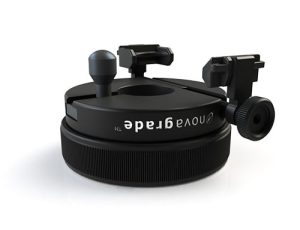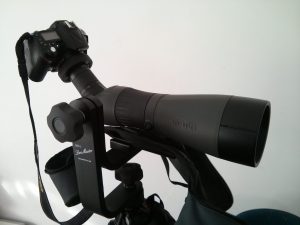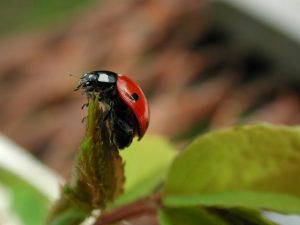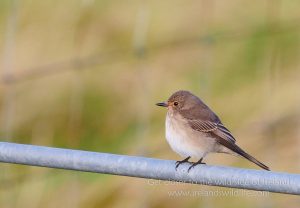 Pros: compact and light — easily throw in a pocket or camera bag. Universal… adapts easily to fit most scope eyepieces and unique interchangable “gripper” system works with any smartphone. Very easy to fit and use… simple, twist to secure, twist to release mechanism.
Pros: compact and light — easily throw in a pocket or camera bag. Universal… adapts easily to fit most scope eyepieces and unique interchangable “gripper” system works with any smartphone. Very easy to fit and use… simple, twist to secure, twist to release mechanism.
Cons: the smartphone adapter can be a bit fiddly to set up and align initially, but you only have to do it once. After that you just use the spring-loaded clamp to quickly connect and disconnect your phone.
Price: US$149.99 each via Novagrade.com — there is currently no Irish distributor, but European customers can order Novagrade products from the company’s Spanish partners Oryx.
Rating: Recommended
The Novagrade adapters are a great recent addition to the digiscoping market… they are small, light, strong and easy to use. Perhaps their most compelling selling point is the fact that they instantly cater for different diameter scope eyepieces, and will even hook up to your binoculars in a pinch. It means that if you upgrade your scope, your eyepiece or find yourself borrowing somebody else’s optics on a trip, your digiscoping adapter will… well, adapt, for want of a better word
You can also adjust the smartphone adapter to fit any phone… so when you upgrade your mobile… which seems to happen so often these days… you won’t need to buy a new digiscoping adapter. I love the Novagrade adapters… they are an elegant, innovative and eminently portable solution to taking stunning super-telephoto wildlife photographs through your scope. They also cost substantially less than many proprietary adapters, so are an economical option if you want to give digiscoping a whirl without breaking the bank.
Novagrade Digiscoping Adapters Full Review

Digiscoping is becoming more and more popular as birders and wildlife enthusiasts around the world realise that they can use their existing high-quality optics to take super-telephoto photographs. First off a caveat: digiscoping will NEVER replace high end super-telephoto lenses as the most flexible and effective way to take close up pictures of wildlife. A fast prime lens will almost always produce superior results across a much wider range of field conditions than any scope / camera combination.
However, in the right conditions digiscoping can yield surprisingly good results, and is a very economical option compared to the thousands (sometimes tens of thousands) of Euro you’d need to spend on a fast super telephoto camera lens — particularly if you already own a high-spec spotting scope.
Your camera and your spotting scope — a marriage made in heaven?
With digiscoping as with any sort of telephoto photography, the photographer’s biggest enemy is camera movement or shake. Assuming you have a spotting scope mounted on a steady tripod with a good head, the next most critical component in the system is a solid, steady connection between the camera (or camera-phone) and the scope eyepiece.
Most people’s introduction to digiscoping comes through holding a compact camera or smartphone up against their scope eyepiece to get a “record shot” of a bird or animal they’ve seen. This isn’t as ridiculous as it sounds, and I’ll often hold my phone up to my binoculars in the field for a quick ID shot of a bird I’m not sure of — but the quality of the resulting images is often marginal, and the technique is anything but consistent. Holding everything steady is simply too difficult.
So you need a solid connection between your scope and your camera that will minimise movement and shake. Many scope manufacturers make bespoke digiscoping adapters that do this… but they tend to be specific to a particular scope model or eyepiece. The novagrade adapters take a different approach. Both the DSLR and Smartphone adapters use a clever “compression ring” system to clamp the adapter securely to the scope eyepiece. By swapping out the four compression rings provided you can adjust the adapter to fit any eyepiece diameter between 39 and 60.75mm — or pretty much any contemporary scope and binocular eyepiece on the market today.
I have to say the system works incredibly well. You simply place the novagrade adapter over the scope or binocular eyepiece, twist the collar to secure it, and you’re ready to go… quick, simple and secure.
Here’s a video that shows exactly how the system works:
Attaching your camera / smartphone

If you’re using a Canon or Nikon DSLR then your novagrade adapter will have either a Canon or Nikon mount bayonet fitting. Simply remove the lens from you camera, switch the camera to manual focus mode (digiscoping relies on the scope’s focusing mechanism) and attach the novagrade adapter… that’s it.
With the smartphone adapter you choose the right set of clamps / grips to suit your phone from the selection provided, ensuring that the adapter can grip the phone securely without pushing any of the exposed buttons on the outer case. I could explain at length how to do this… but I don’t have to, as the good folks over at novagrade have produced an easy-to-follow video showing exactly how it’s done.
In practice it can be a bit fiddly to get it right, but you only have to do it once and then you’re all set — until you upgrade your phone, in which case you may need to repeat the process.
Build quality
I have to say that the build quality of both the DSLR adapter and the Universal Smartphone Adapter is very good. Both bodies are made from mat-black coated anodized aluminium, making them lightweight but very strong. The DSLR unit is more compact, and possibly more robust, because it doesn’t need the protruding clamping paraphernalia that the smartphone adapter has.
One thing worth mentioning here is the clear optically coated glass filter that sits in the back of the DSLR adapter. While this is a good idea to protect your camera’s sensor from dust when the novagrade is attached, it can be a bit tricky to clean, so do try and keep fingerprints, etc. off the glass when handling the adapter. If it does get marks on it do take the time to clean it properly, as any optical system is only going to be as good as its weakest link, so any marks here will have a detrimental impact on your photographs.
The additional bits like the plastic polymer compression rings and the smartphone adapter clamps appear to be solid and well made, they work well and, from the testing I’ve done I can see no reason why they shouldn’t give many years of trouble-free service under normal usage conditions.
Out in the field
Using both digiscoping adapters in the field is quick and easy.

The DSLR Digiscoping Adapter
With the DSLR adapter you simply place the camera, with the adapter fitted, over the eyepiece, clamp it tight, and you’re ready to start digiscoping. You’ll need to get used to the camera settings — you have no control over aperture. As a scope has no internal diaphragm like a camera lens there’s only one setting — the scope will let through as much light as it will let through, and there’s no way to control that. You’ll need to set your DSLR to manual, and use a combination of shutter speed and ISO setting to give you the desired exposure, and use the scope to focus. Bear in mind that you will need to refocus after attaching the camera, as the focus point for the camera and your eye will be different.
With digiscoping light is the main limiting factor. With anything less than a bright sunny day you’ll typically be shooting at ISO levels of 1,600 or 3,200 to get a bright image with a fast enough shutter speed to prevent blur because of camera shake. That means your images may be a bit more “grainy” than you’re used to (high ISO introduces noise akin to the “grain” you used to get with high speed film), but with a bit of practice you can get surprisingly good results.
The Universal Smartphone Digiscoping Adapter

Using a smartphone is even easier — you just attach your adapter onto the scope eyepiece, slot your phone into the pre-aligned grippers, and switch it to camera mode. Use the phone LCD as a giant viewfinder — zoom in slightly to remove any vignetting you see (some vignetting is almost inevitable), start taking your photo and video footage.
I love the smartphone adapter because it’s small enough to throw in the pocket of my MulePack scope carrier, and I always have my phone with me. That means I can have a digiscoping setup ready-to-go in seconds if I see something unusual or interesting when I don’t have my DSLR with me. It’s fantastic for record shots in the field… but often produces results far exceeding my expectations.
That said, if i’m trying to photograph something specific, and photo quality is important I’ll choose the DSLR every time, because you have much more control over the settings, a bigger sensor capable of delivering better results at high ISO, and nothing between the scope optics and that sensor to interfere with the resulting shot.
Conclusion
I’m still relatively new to digiscoping, but understanding the principals of photography is a big help. It’s a steep learning curve, for sure, but I’m enjoying the ride, and look forward to improving my results through practice. Digiscoping has great potential for bringing super-telephoto wildlife photography to many birders and wildlife enthusiasts who already own a scope (or are prepared to invest in one), but who don’t have the hefty budget necessary for high-end camera gear.
If you’re interested in giving digiscoping a whirl with either your DSLR or your smartphone then the novagrade digiscoping adapters offer a relatively low cost and convenient route to get you started. Check them out.
Acknowledgements
I’d like to thank novagrade for submitting their Nikon DSLR Adapter and Universal Smartphone Adapter for review on Ireland’s Wildlife.
NB. Ireland’s Wildlife has no specific affiliation to any optics or gear manufacturer and all reviews on the site are completely independent and objective. See our disclosure statement for more details. If you’re an optics or gear manufacturer and would like to submit your wildlife related product for review on the site please drop us a line using the contact form and we can take things from there.










5 comments
Rick Paillon
Did you have to remove the rubber eyepiece surround from the Meopta scope to get a good fit? I have the same scope.
Calvin Jones
Hi Rick,
No… I don’t have to remove the rubber with the Meopta scope. Originally the digiscoping adapter came with a different type of sizing insert — and with those I struggled to get a good fit — but the company developed these new circular inserts and now it fits the scope fine.
The right insert is a a bit of a snug fit as it pushes down over the rubber on the eyepiece, but makes for a very secure connection between camera and scope when you tighten the bezel on the adapter.
Happy digiscoping.
Spencer Tom Tafadzwa Chirume
HI do you reckon the adopter is a fit with a Sony A7?
C. elston
Will it adjust to samsung s4 with speck case? Will s4 android ph & adapter work with a sony SLR mount? [email protected]. Thank you .
Calvin Jones
It should adapt fine to the phone with or without the case — you just have to choose the right spacers. It can be a bit fiddly the first time — but you only have to do it once… and the adapter will “adapt” to any combination, so will still work when you upgrade your phone / case.
At the moment I think Novagrade only produce DSLR adapters for Nikon and Canon mounts, although I believe they are looking at mounts for other manufacturers. I suggested they might want to creat a T-mount version that could easily be adapted to any DSLR mounting system. Not sure if that’s in the pipeline but would be a great option.